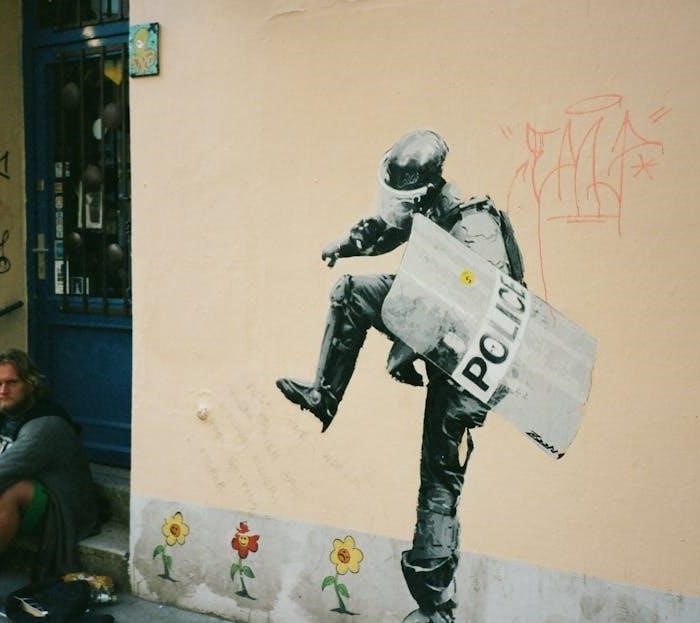Written by Gabriel García Márquez in 1981, Chronicle of a Death Foretold is a tragic tale exploring fate, honor, and societal expectations in a small Colombian town.
1.1 Background of the Novel
Chronicle of a Death Foretold is a novella by Gabriel García Márquez, published in 1981. It is loosely based on a real event that occurred in Sucre, Colombia, in 1951, involving the murder of a young man.
The story is set in a small, unnamed Colombian town, where traditional values and societal norms dominate. The novella blends factual and fictional elements, creating a unique narrative style that reflects García Márquez’s mastery of magical realism.
The novel explores themes of fate, honor, and the inevitability of death, all of which are deeply rooted in the cultural and historical context of the setting. Its concise structure and vivid imagery make it a compelling exploration of human nature and societal expectations.
1.2 Brief Summary of “Chronicle of a Death Foretold”
The novella revolves around the tragic death of Santiago Nasar, a young man murdered by the Vicario brothers to restore their family’s honor. The story unfolds in a small Colombian town, where societal expectations and traditions dictate moral codes.
After Angela Vicario, the bride, is returned to her family on her wedding night for not being a virgin, her brothers, Pedro and Pablo, vow to kill Santiago, whom they blame for dishonoring their sister. Despite widespread knowledge of the impending murder, no one intervenes to stop it.

The narrative is presented in a non-linear fashion, blending past and present, as the narrator reconstructs the events leading to Santiago’s death. The novella examines themes of fate, honor, and the inevitability of tragedy in a rigidly traditional society.
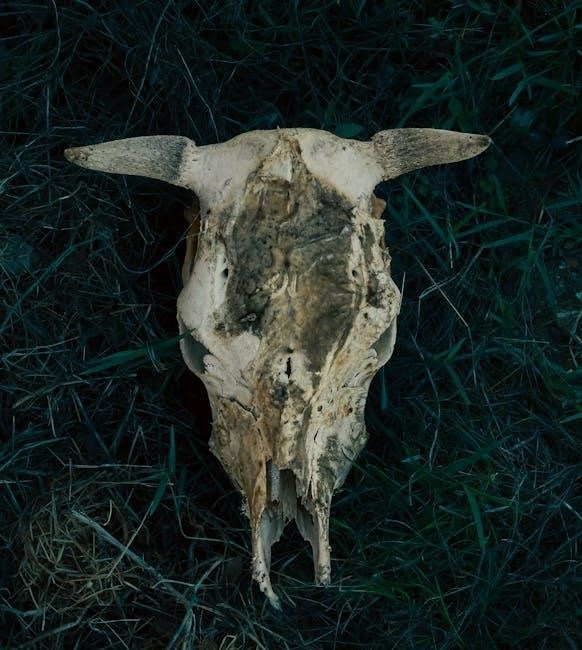
Major Themes in the Novel
The novel explores themes of honor, fate, and cultural traditions, delving into societal norms and moral codes that shape individual actions and collective responsibility in a rigid, traditional community.
2.1 The Theme of Honor
Honor is a central theme in Chronicle of a Death Foretold, driving the novel’s tragic events. The Vicario family’s quest to restore their daughter’s tarnished reputation leads to Santiago Nasar’s fatal destiny. Honor, portrayed as a rigid and unyielding societal construct, dictates actions and justifies violence, even murder. The community’s acceptance of this code highlights how deeply ingrained honor is in their culture. Through the characters’ relentless pursuit of honor, García Márquez critiques the destructive nature of such rigid moral frameworks, exposing how they perpetuate cycles of violence and tragedy. The novel illustrates how honor, meant to uphold dignity, often becomes a justification for senseless acts, revealing the darker side of tradition and societal expectations.
2.2 Fate vs. Free Will
The interplay between fate and free will is a recurring motif in Chronicle of a Death Foretold. Santiago Nasar’s demise is foretold from the beginning, creating an inescapable sense of inevitability. Yet, the novel also highlights the choices made by characters that contribute to the tragedy, suggesting that free will plays a role in shaping the outcome. The Vicario brothers, driven by a sense of honor, choose to avenge their sister’s perceived disgrace, while Santiago’s own decisions, such as his lavish lifestyle, inadvertently escalate tensions. The townspeople, aware of the impending murder, fail to intervene, illustrating how societal norms and fatalistic beliefs can limit individual agency. García Márquez explores the tension between destiny and personal responsibility, leaving readers to ponder whether the events were truly unavoidable or the result of collective and individual choices.
2.3 Cultural Context and Tradition
The cultural context of Chronicle of a Death Foretold is deeply rooted in the traditions and societal norms of a small Colombian town. Honor, a central theme, is portrayed as a rigid and unyielding force that dictates the actions of characters like the Vicario brothers. The novel highlights the oppressive nature of traditional gender roles, particularly the expectation of virginity for women before marriage, which drives the plot’s tragic events. Religious and familial customs also play a significant role, as the community’s collective guilt and complicity in Santiago’s fate underscore the power of cultural expectations. García Márquez critiques the inflexibility of these traditions, showing how they can lead to violence and tragedy. The novel thus serves as a commentary on the clash between tradition and modernity, as well as the suffocating grip of societal norms on individual lives.
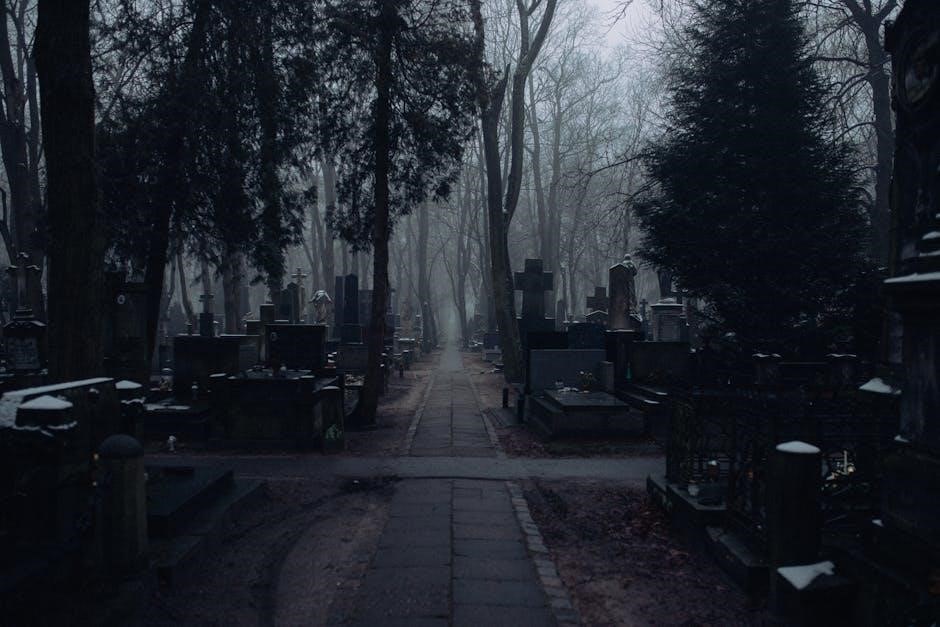
Characters and Character Analysis
The novel revolves around key characters like Santiago Nasar, the doomed protagonist, and the Vicario brothers, driven by a misguided sense of honor. Angela Vicario’s actions spark the tragedy, while the townspeople’s complicity highlights societal pressures.
3.1 Santiago Nasar: The Protagonist
Santiago Nasar is the central figure of the novel, a wealthy, charismatic man whose life is marked by tragedy. Born to a prominent family, he embodies both privilege and isolation. His reputation as a womanizer and his lavish lifestyle make him a subject of both admiration and envy. The novel explores his final days, focusing on the events leading to his death. Santiago’s fate is sealed when he is falsely accused of taking Angela Vicario’s virginity, a claim that ignites a chain of events driven by honor and vengeance. Despite his attempts to evade his destiny, Santiago’s death is inevitable, symbolizing the clash between fate and free will. His character serves to critique the rigid societal norms that define his world, particularly the toxic expectations of masculinity and honor.
3.2 The Vicario Brothers: The Antagonists
The Vicario brothers, Pedro and Pablo, are the antagonists of the novel, driven by a rigid sense of honor and a desire to restore their family’s reputation. Their actions are fueled by the accusation that Santiago Nasar dishonored their sister, Angela, by allegedly taking her virginity. The brothers are portrayed as relentless and unyielding, believing that killing Santiago is their moral duty. Their pursuit of vengeance is both tragic and inevitable, as it is rooted in the deeply ingrained cultural norms of their society. Despite the foreseeability of the tragedy, the brothers remain resolute, embodying the destructive power of honor and tradition. Their actions highlight the societal pressures that dictate their behavior, making them both victims and perpetrators of a flawed system. The brothers’ role underscores the novel’s critique of toxic masculinity and the devastating consequences of rigid cultural expectations.
3.3 Angela Vicario: The Catalyst of the Tragedy
Angela Vicario is the younger sister of the Vicario brothers and the unwitting catalyst of the novel’s tragic events. Forced into a marriage with Bayardo San Román, Angela’s life takes a dramatic turn when her husband discovers she is not a virgin on their wedding night. This revelation leads to her being returned to her family, igniting a chain reaction of honor-driven vengeance. Angela’s accusation that Santiago Nasar is responsible for her lost virginity sets the stage for his eventual murder. Throughout the novel, Angela’s voice is often absent or marginalized, yet her actions and decisions are central to the unfolding tragedy. Her character represents the oppressive societal expectations placed on women, as well as the devastating consequences of rigid gender roles and the pursuit of honor. Angela’s story is one of both victimhood and agency, intertwined with the fate of those around her.


Symbolism and Imagery
In “Chronicle of a Death Foretold,” rich symbols and vivid imagery enhance the narrative, creating a layered exploration of fate, honor, and cultural traditions in a small Colombian town.
4.1 The Role of Symbols in the Novel
The novel employs symbols to convey deeper meanings, with the most prominent being the knife, representing fate and violence. The yellow butterflies symbolize impending doom, while the bishop’s absence reflects divine indifference. These elements intertwine with the narrative, emphasizing the inevitability of Santiago’s death and the societal forces driving it.
4.2 Imagery and Its Impact on the Narrative
Gabriel García Márquez masterfully uses vivid imagery to immerse readers in the world of the novel, creating a haunting atmosphere that underscores the inevitability of tragedy. The recurring image of yellow butterflies symbolizes death and fate, while the moon’s eerie glow sets a foreboding tone. The graphic description of Santiago Nasar’s death, with blood-soaked details, intensifies the horror and emphasizes the brutality of tradition. Imagery also highlights the cultural context, such as the bustling market and the Vicario family’s rigid adherence to honor. These visual elements deepen the emotional impact, making the narrative feel both surreal and painfully real. By weaving sensory descriptions into the story, Márquez reinforces the themes of fate, violence, and societal expectations, drawing readers into the tragic unfolding of events.
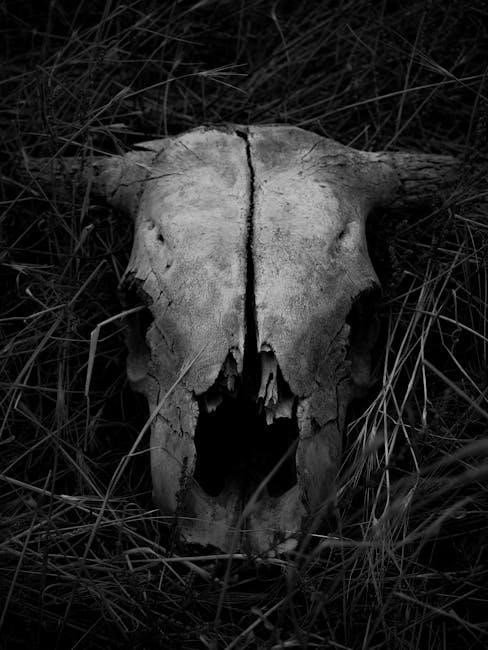
Literary Style and Structure
Gabriel García Márquez employs magical realism and a non-linear narrative, blending the fantastical with reality. The concise prose and circular storytelling heighten the sense of inevitability and fate in the tragic events.
5.1 Magical Realism in “Chronicle of a Death Foretold”
Márquez masterfully blends magical realism with gritty realism, creating a unique narrative voice. The novel’s magical elements, such as the hauntingly detailed dreams and the supernatural inevitability of Santiago’s fate, are seamlessly woven into the fabric of the story. This blend allows the author to explore deeper truths about human nature, societal norms, and the inexorable forces of destiny. The magical aspects enhance the emotional weight of the tragedy, making the events feel both fantastical and disturbingly real. Through this style, Márquez critiques the rigid cultural traditions and the moral hypocrisy of the community, offering a profound commentary on the human condition.
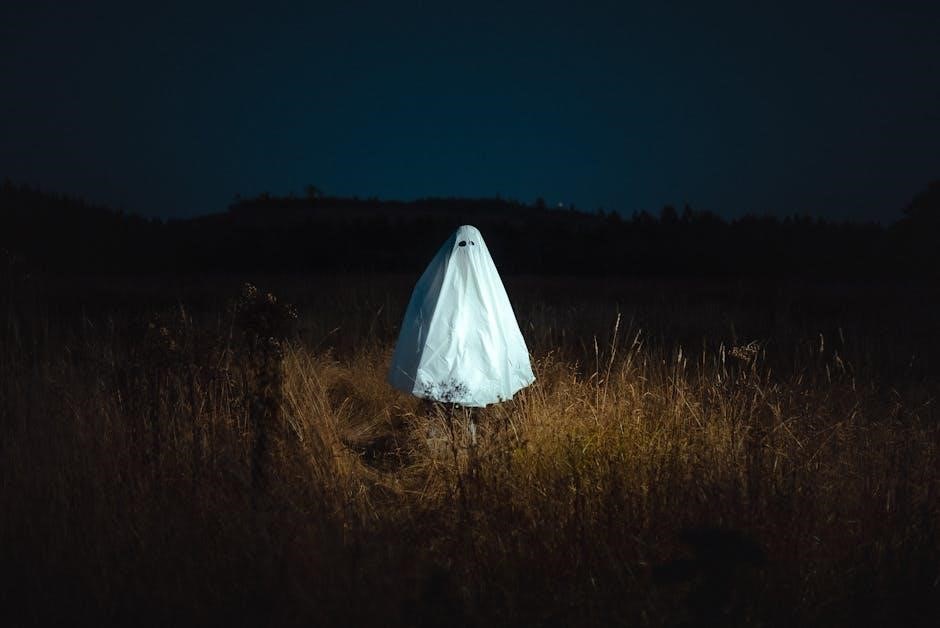
5.2 Non-Linear Narrative Structure
The novel employs a non-linear narrative structure, unfolding the story through fragmented flashbacks and multiple perspectives. The death of Santiago Nasar is revealed at the outset, and the narrative circles back to this event repeatedly, slowly unraveling the complexities of the tale. This structure mirrors the way collective memory reconstructs events, with each character offering a piece of the puzzle. The non-linear approach creates a sense of inevitability, as the reader is constantly reminded of the tragic outcome. It also heightens the tension by delaying the revelation of key details, such as the motives behind the murder. Through this structure, Márquez emphasizes the subjective nature of truth and the ways in which time and memory shape our understanding of events. The narrative’s fragmented nature reinforces the themes of fate and the irreversibility of human actions.

Themes and Messages

The novel explores the tragic consequences of rigid societal norms, delving into themes of love, betrayal, and the inevitability of fate, while critiquing the destructive power of these elements.
6.1 Love and Betrayal
Love and betrayal are central to the novel, driving the tragic events forward. Angela Vicario’s arranged marriage and her betrayal of societal expectations ignite the chain of events leading to Santiago Nasar’s death. Her unspoken love for Santiago contrasts sharply with her forced commitment to Bayardo, highlighting the destructive power of unrequited passion. Meanwhile, Bayardo’s obsessive love for Angela further complicates the narrative, illustrating how love can both unite and divide. The novel critiques the rigid societal norms that dictate relationships, showing how betrayal—whether real or perceived—can lead to devastating consequences. Through these themes, García Márquez explores the tension between individual desire and collective expectations, ultimately revealing the tragic inevitability of the events unfolding.
6.2 Social Commentary and Criticism
Gabriel García Márquez uses Chronicle of a Death Foretold to critique the rigid societal norms and cultural traditions that perpetuate violence and inequality. The novel condemns the oppressive gender roles that trap both men and women, as seen in Angela Vicario’s forced marriage and Santiago Nasar’s doomed fate. The community’s complicity in the tragedy highlights the dangers of collective apathy and the failure to challenge harmful traditions. The author also critiques the hypocrisy of religious and moral standards, as the townspeople prioritize honor over human life. Through this critique, Márquez exposes the darker aspects of human nature and the destructive power of societal expectations. The novel serves as a powerful commentary on the need for individual responsibility and the urgent call to question and transform oppressive cultural practices.

